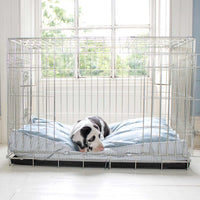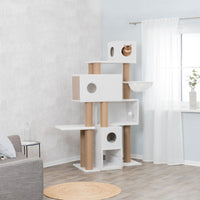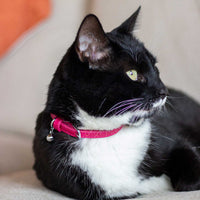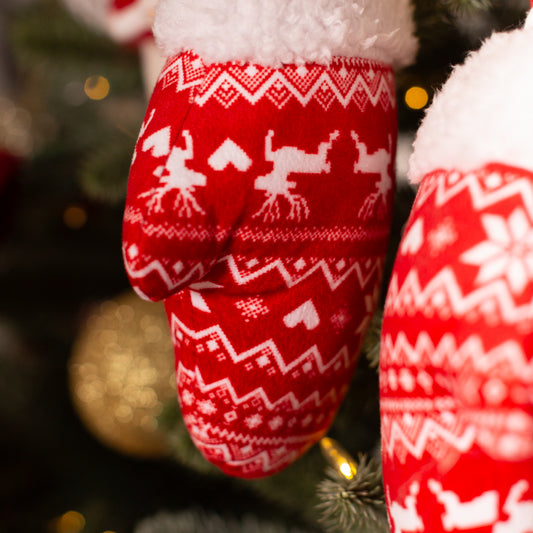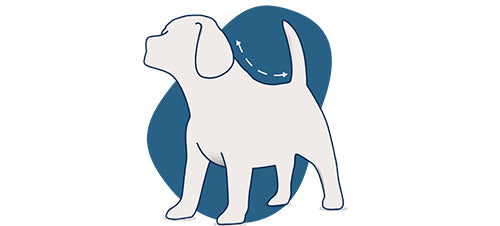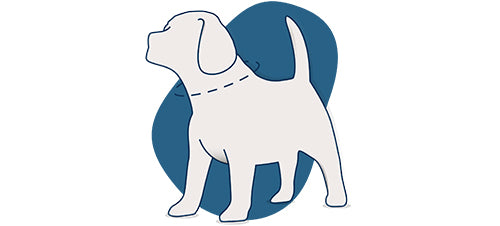As a pet owner, you may have experienced moments when you catch your feline friend gazing intently at you. Whether you're sitting on the couch, working at your desk, or even waking up to those piercing eyes, you might find yourself wondering, "Why is my cat staring at me?" This seemingly mysterious behaviour can actually be quite fascinating once you understand the underlying reasons.
Understanding Cat Behaviour

Cats are known for their enigmatic and sometimes perplexing behaviours. Unlike dogs, who are often more expressive and direct in their actions, cats tend to be subtler in their ways. When your cat is staring at you, it can mean a variety of things, depending on the context and their body language.
1. Seeking Attention
One of the most common reasons for your cat staring at you is them looking for your attention. Cats are independent creatures, but they also enjoy social interaction. If your cat stares at you and then starts meowing or purring, it's likely they want some affection, playtime, or even a treat. This is their way of communicating their needs and desires to you.
2. Curiosity and Observation
Cats are naturally curious animals. They spend a lot of their time observing their surroundings and the people in their environment. When your cat is staring at you, they might just be curious about what you're doing. This is especially true if you're engaged in an activity that piques their interest, like cooking or using a computer. Their stare can be a sign of their inquisitive nature.
3. Bonding and Affection
Believe it or not, a cat staring at you can be a sign of affection and bonding. Cats have a unique way of showing their love, and direct eye contact is one of them. This gesture indicates that your cat feels safe and comfortable around you. Giving your cat some fuss and attention when they do this will help to reinforce the bond.
4. Hunger or Expectation
If your cat tends to stare at you around mealtime, they are likely reminding you that it's time to eat. Cats quickly learn routines and can be quite persistent when they're hungry. Staring can be their way of signalling that they expect you to fill their food bowl or give them a treat.
5. Health and Well-being
Sometimes, a cat’s staring can be related to their health. If your cat seems to be staring at you more than usual and displays other unusual behaviours like lethargy, changes in appetite, or vocalisations, it might be a sign of an underlying health issue. It’s always a good idea to consult with a vet if you notice any significant changes in your cat's behaviour.
6. Instinctual Behaviour
Cats are natural hunters, and staring is a part of their predatory instinct. When they fix their gaze on something, they are essentially in a hunting mode. If your cat is staring at you, they might be practicing their hunting skills. This behaviour is more common in younger cats and kittens who are still honing their instincts.
Decoding Your Cat’s Body Language

To fully understand why your cat is staring at you, it’s important to pay attention to their overall body language. Here are some key indicators to watch for:
- Relaxed Body and Ears: If your cat’s body is relaxed, ears are in a neutral position, and they are softly blinking, the stare is likely affectionate.
- Tense Body and Pinned Ears: A stiff body and ears pinned back could indicate that your cat is feeling threatened or anxious. In this case, the stare might be a warning sign.
- Dilated Pupils: Wide, dilated pupils can indicate excitement or fear. Assess the situation to determine the cause of this reaction.
- Tail Position: A tail that is held high and twitching slightly can show curiosity or happiness, while a fluffed-up tail indicates fear or aggression.
How to Respond to Your Cat’s Stare

Responding to your cat’s stare appropriately can help strengthen your bond and ensure their needs are met. Here are some tips:
- Acknowledge Them: If your cat is staring at you for attention, take a moment to pet them, play with them, or simply talk to them. This helps reinforce positive behaviour.
- Observe Their Needs: If the stare is accompanied by meowing near their food bowl, it’s probably time for a meal. Ensure you maintain a consistent feeding schedule.
- Provide Stimulation: Cats need mental and physical stimulation. Offer toys, climbing structures, and interactive play to keep them engaged. Our range of cat trees are designed to keep your cat stimulated and appeal their natural playful instinct.
- Health Check: If you notice any changes in behaviour along with the staring, schedule a vet visit to rule out any health issues.
Conclusion
Understanding why your cat is staring at you can deepen your relationship and ensure your feline friend is happy and healthy. Whether they are seeking attention, showing affection, or simply curious, recognising these behaviours can help you respond appropriately. Remember, each cat is unique, and their staring can have multiple meanings depending on the context. Pay attention to their body language and overall behaviour to decode their message accurately.
By being attentive and responsive, you can create a nurturing environment that caters to your cat’s needs, making both of your lives more harmonious. So the next time your cat stares at you, take it as an opportunity to connect and understand your furry companion better.
Shop everything you could need for your cat here at Lords & Labradors, from cat trees to food to toys we really have everything you could need.

























































